Nagaland
A land of vibrant tribes, breathtaking landscapes, and warrior traditions

Nagaland, nestled in the northeastern part of India, is a mesmerizing blend of indigenous cultures, lush green hills, and age-old traditions. Known as the “Land of Festivals,” it is home to 16 major Naga tribes, each with its own unique customs, dialects, and vibrant attire. From the adrenaline-pumping Hornbill Festival to the misty valleys of Dzukou, Nagaland offers an unforgettable experience for history lovers, adventurers, and culture enthusiasts alike.
Must-Visit Attractions in Nagaland
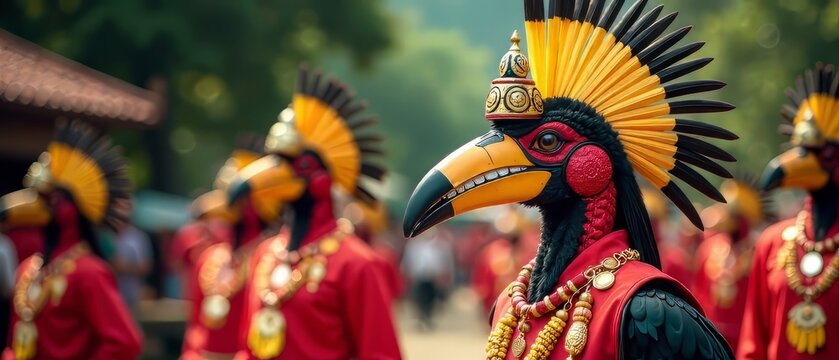
Kisama
Asia’s most vibrant tribal carnival, featuring Naga warrior dances, folk music, and indigenous crafts.

Dzukou Valley
A trekker’s paradise with rolling emerald hills, rare seasonal flowers, and crystal-clear streams.

Kohima War Cemetery
A solemn WWII memorial honoring the fierce Battle of Kohima, surrounded by lush greenery.

Longwa Village
Home of the legendary Konyak headhunters, where you can meet tattooed warriors and see a village straddling India-Myanmar.
Heritage of Nagaland
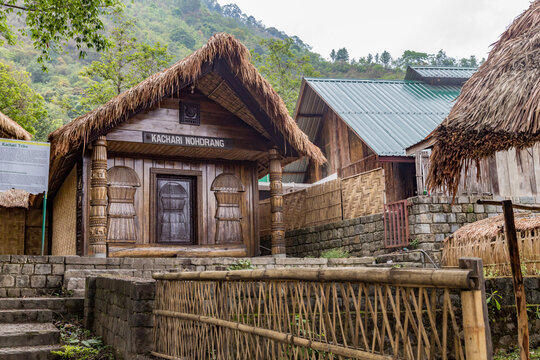
Nagaland’s cultural heritage is a vibrant tapestry of tribal traditions, warrior legacies, and artistic excellence. Each of its 16 major tribes boasts a unique identity, reflected in their exquisite handwoven shawls, intricate beadwork, and fearsome headhunting history. The state resonates with indigenous folk songs, powerful warrior dances, and age-old storytelling traditions. From the rhythmic beats of log drums to the colorful Hornbill Festival, Nagaland’s living culture thrives in its festivals and daily life. The Konyak tattooed warriors, Ao tribe’s woodcraft, and Angami textiles showcase unparalleled craftsmanship. This rich heritage, passed down through generations, makes Nagaland a captivating cultural destination in Northeast India.
The Performing Arts of Nagaland
Nagaland’s cultural identity thrives in its vibrant performing arts, from the rhythmic beats of tribal war drums to the haunting melodies of indigenous folk songs. Each tribe preserves its unique heritage through warrior dances, storytelling chants, and festive performances. The Hornbill Festival showcases this living tradition, where Naga tribes perform spirited dances like the Chang Lo (Sukraini) and Zeliang folk dances in elaborate warrior attire. Folk music, accompanied by bamboo flutes, mouth harps (Mkhum), and log drums, echoes the spirit of the hills. Modern Naga rock and folk fusion have also gained prominence, blending tradition with contemporary sounds.
Music Form
Nagaland’s music is a powerful expression of its tribal soul—ranging from ancient war chants to modern rock anthems. The state is renowned for its indigenous folk music, where songs narrate heroic tales, harvest celebrations, and love stories. Instruments like the bamboo mouth harp (Mkhum), log drums, and animal horn trumpets create mesmerizing rhythms. In recent decades, Nagaland has emerged as the “Rock Capital of India,” hosting the famous Hornbill International Rock Festival, where local bands fuse tribal beats with electric guitars. Legendary artists like Alobo Naga and Soulmate have put Naga music on the global map. Folk genres like Li (warrior songs) and Heka (traditional chants) remain integral to tribal ceremonies.
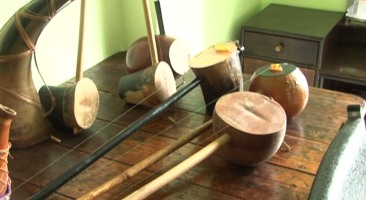
Li
Powerful vocal chants of the Ao tribe, once sung by headhunters to celebrate victories, now performed in cultural shows.
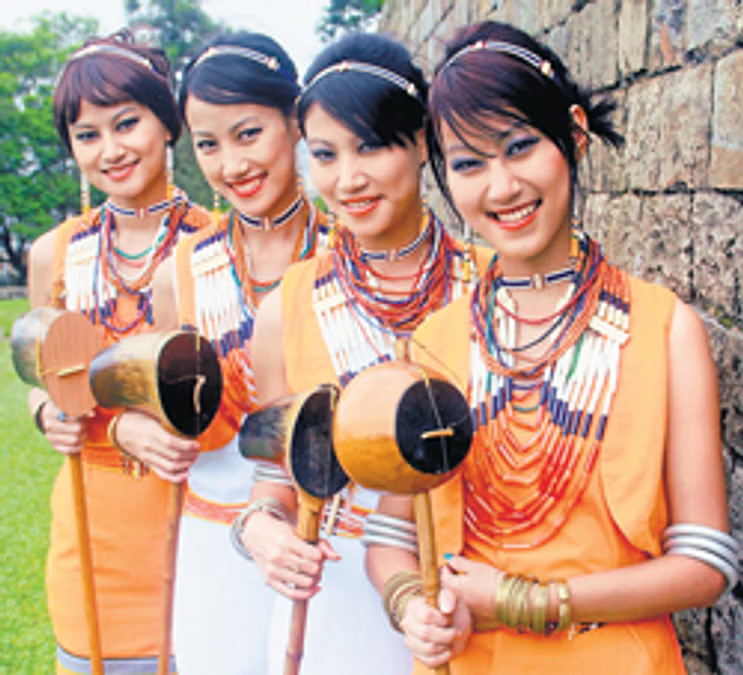
Heka
Melodic storytelling songs of the Rengma tribe, narrating legends, love, and harvests, accompanied by bamboo flutes.
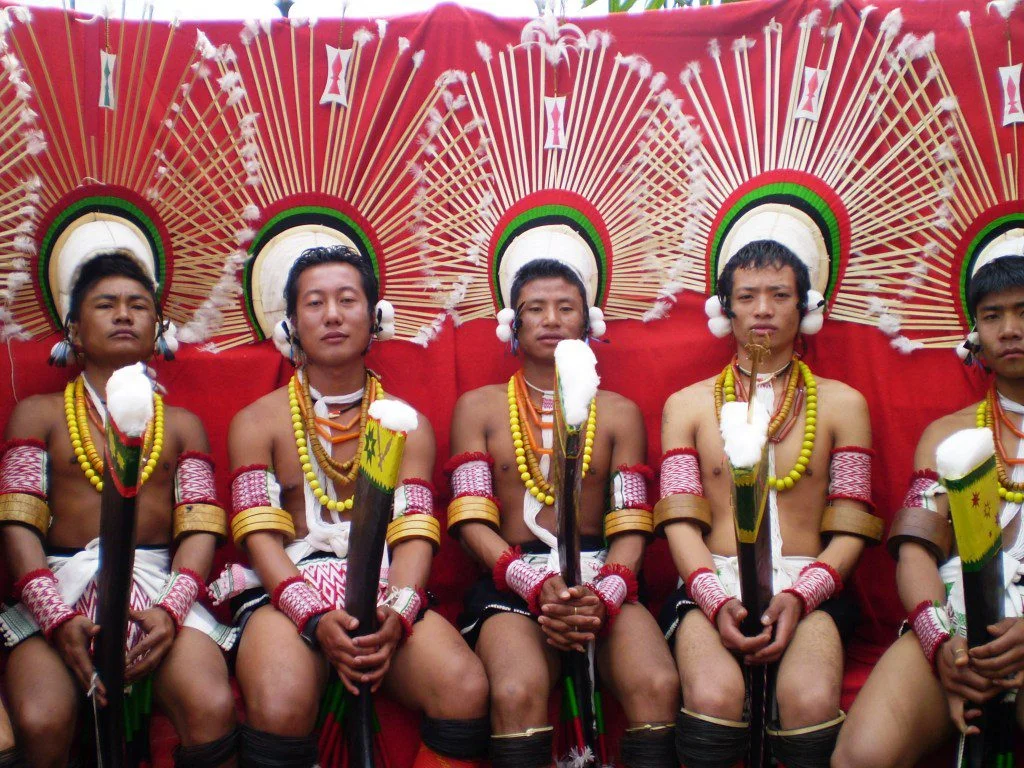
Zeliang Folk Music
Lively tunes by the Zeliang tribe, featuring rhythmic drumbeats and the Mkhum (bamboo mouth harp), often sung during festivals.
Dance Form
Nagaland pulsates with energetic and symbolic dance traditions, each reflecting the valor, rituals, and daily life of its tribes. From warrior dances to celebratory performances, these art forms are a window into Naga culture. Some of the prominent dance forms include:
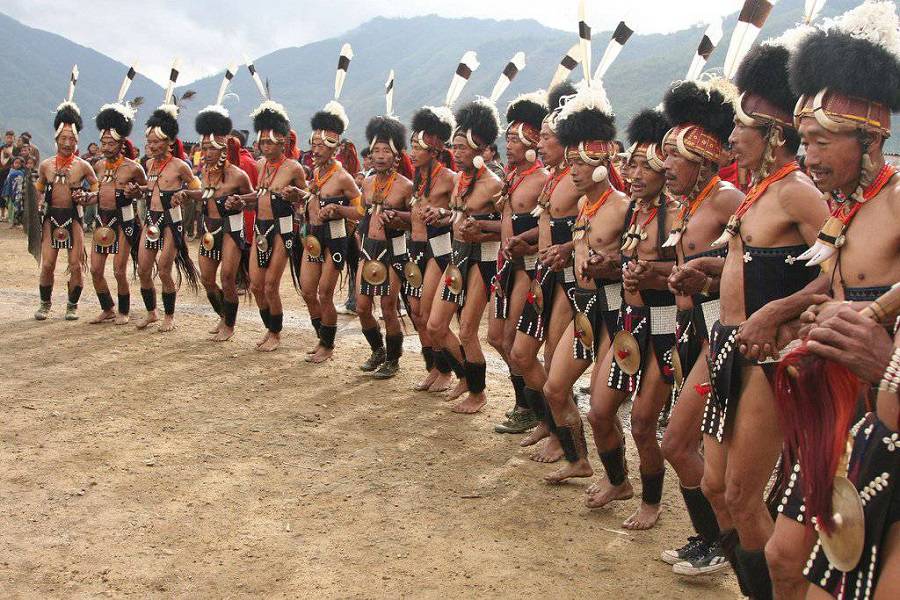
Chang Lo
A triumphant warrior dance of the Chang tribe, performed with spears and feathered headgear to celebrate victories.
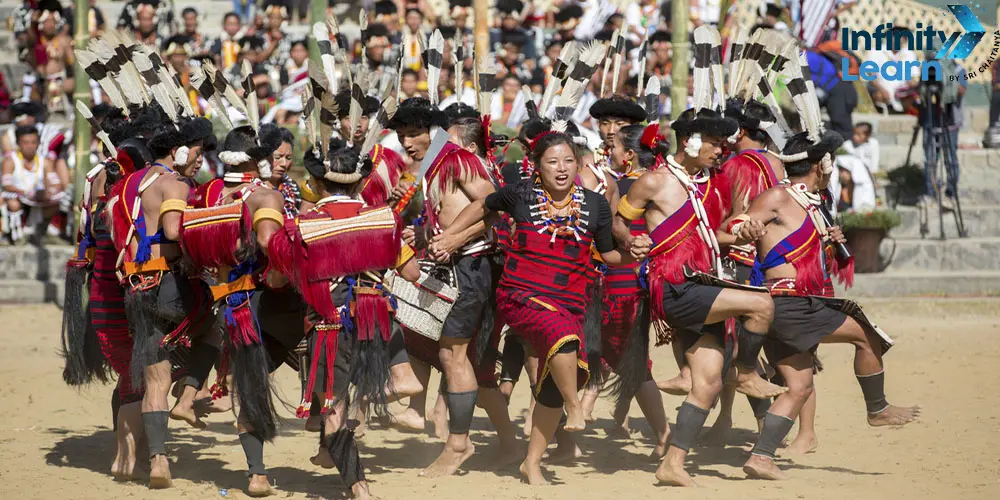
Zeliang Dance
A rhythmic group dance by the Zeliang tribe, featuring synchronized footwork and vibrant costumes.
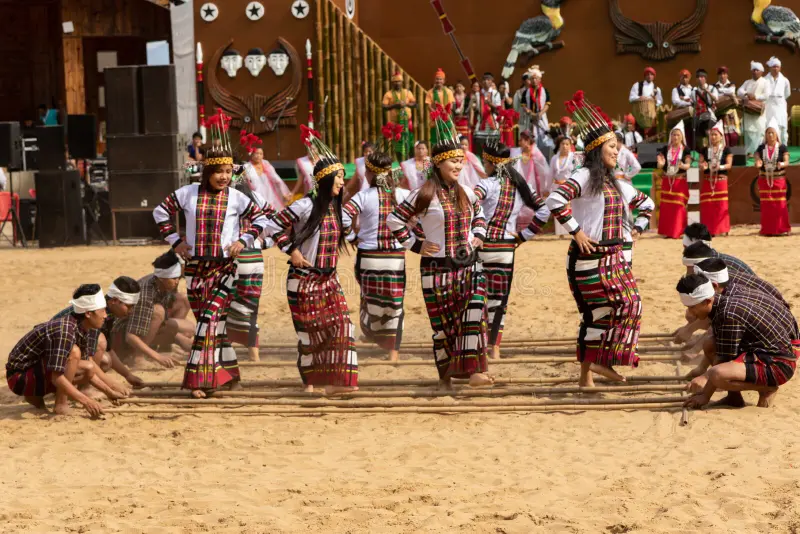
Kuki Dance
A lively performance by the Kuki tribe, marked by swift movements and drum beats during festivals.
Others dance forms – Bamboo Dance, Heka Dance, Khaiva Dance & Monyü Asho.
Festivals and Celebrations
Nagaland, the “Land of Festivals,” celebrates vibrant tribal traditions rooted in agriculture, warrior heritage, and spiritual beliefs. Each festival is a grand display of music, dance, feasting, and age-old rituals, offering a glimpse into the rich cultural tapestry of the Naga tribes.

Hornbill Festival
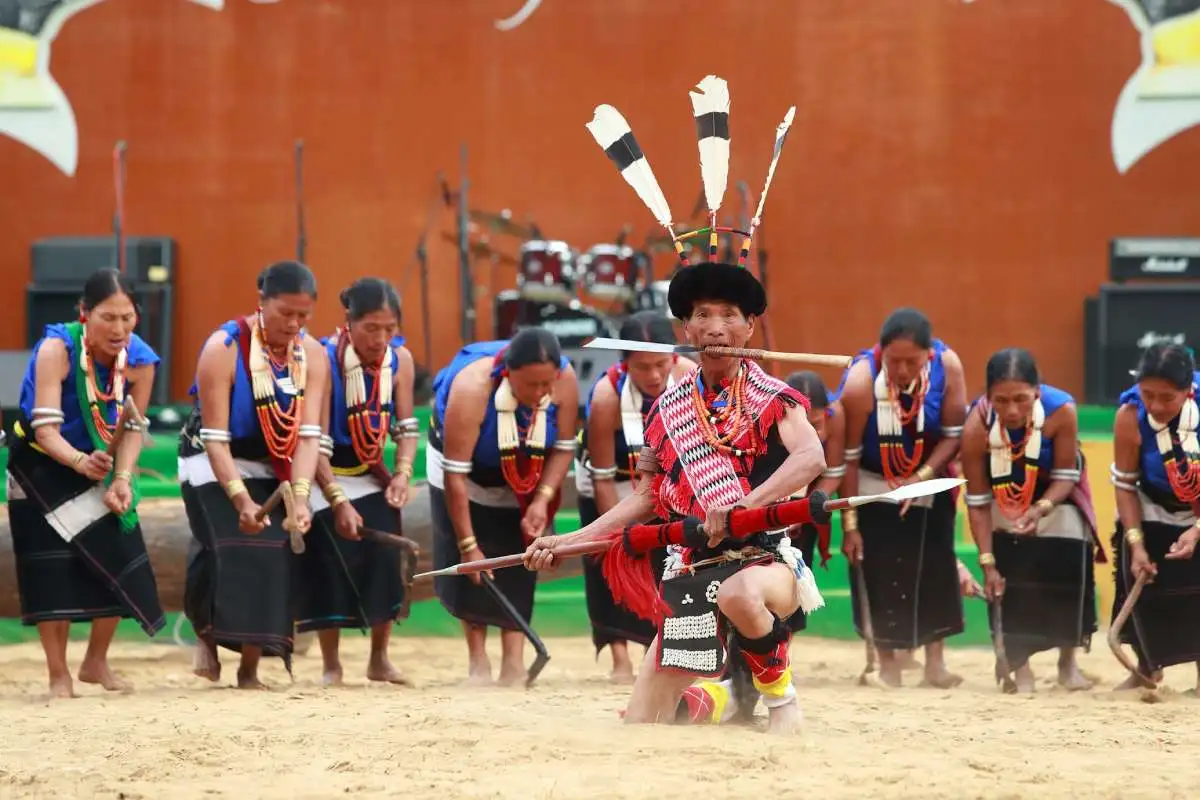
Moatsu Festival
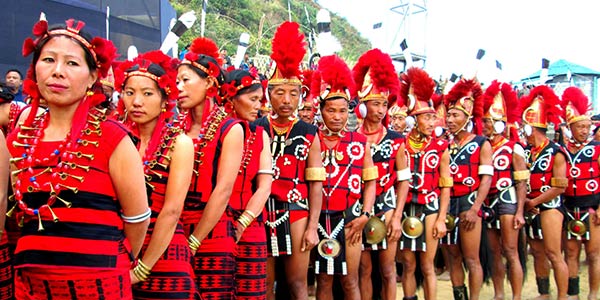
Sekrenyi
Nagaland’s Cuisine
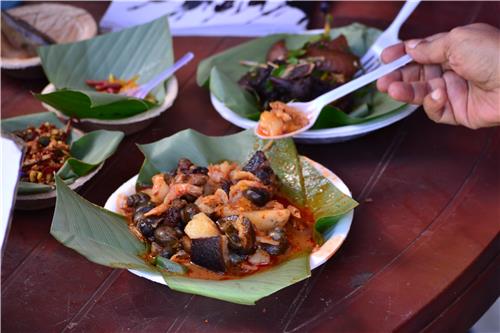
Akibi
Fermented Soybean

Galho
Naga food is fiery, smoked, and flavorful, with a strong emphasis on organic ingredients.
-
Smoked Pork with Bamboo Shoot (Akibi): A signature Naga delicacy.
-
Raja Mircha (Bhut Jolokia): One of the world’s hottest chilies, used in chutneys.
-
Fermented Soybean (Axone): A pungent but delicious ingredient in many dishes.
-
Galho: A rice-based dish with vegetables and meat.
-
Zutho: A traditional rice beer, often served in bamboo mugs.
Popular Shopping Items
Take home a piece of Naga culture with these unique souvenirs:
Naga Shawls – Vibrant, tribe-specific patterns handwoven with intricate designs.
Bamboo & Cane Crafts – Eco-friendly baskets, furniture, and traditional Naga warrior shields.
Tribal Jewelry – Beaded necklaces, horn bangles, and bone earrings worn by Naga warriors.
Wooden Carvings & Spears – Handcrafted warrior weapons and tribal figurines.
Naga King Chili (Raja Mircha) – One of the world’s hottest chilies, sold fresh or as pickles.
Local Honey & Organic Coffee – Pure, forest-sourced honey and aromatic Naga coffee beans.
Best shopping places: Kohima’s Naga Bazaar, Dimapur’s Hong Kong Market, and Kisama’s Hornbill Festival stalls.
Naga Shawls
Bamboo & Cane Crafts
Tribal Jewelry
Wooden Carvings & Spears
Evolution of Nagaland
⇒ Ancient Times: Nagaland was inhabited by Mongoloid tribes who migrated from Southeast Asia.
⇒ Headhunting Era: The warrior tribes practiced headhunting as a rite of passage.
⇒ British Rule: The British expeditions led to the “Naga Hills” becoming part of Assam.
⇒ Post-Independence: Nagaland became the 16th state of India in 1963 after a long struggle for autonomy.
⇒ Modern Nagaland: A blend of traditional tribal life and urban development, with a thriving music and arts scene.
Folk Dances of Nagaland

Nagaland Blogs
- Nagaland Cultural Guide
Places to Visit in Kohima
Places to Visit in Mokokchung
India’s Tribal Heartland
Northeast India’s Hidden Gems
Recommended articles
- Nagaland Cultural Guide
- Places to Visit in Kohima
- Places to Visit Near Dimapur
- India’s Most Unique Tribal Destination
- Northeast India’s Unexplored Wonders
